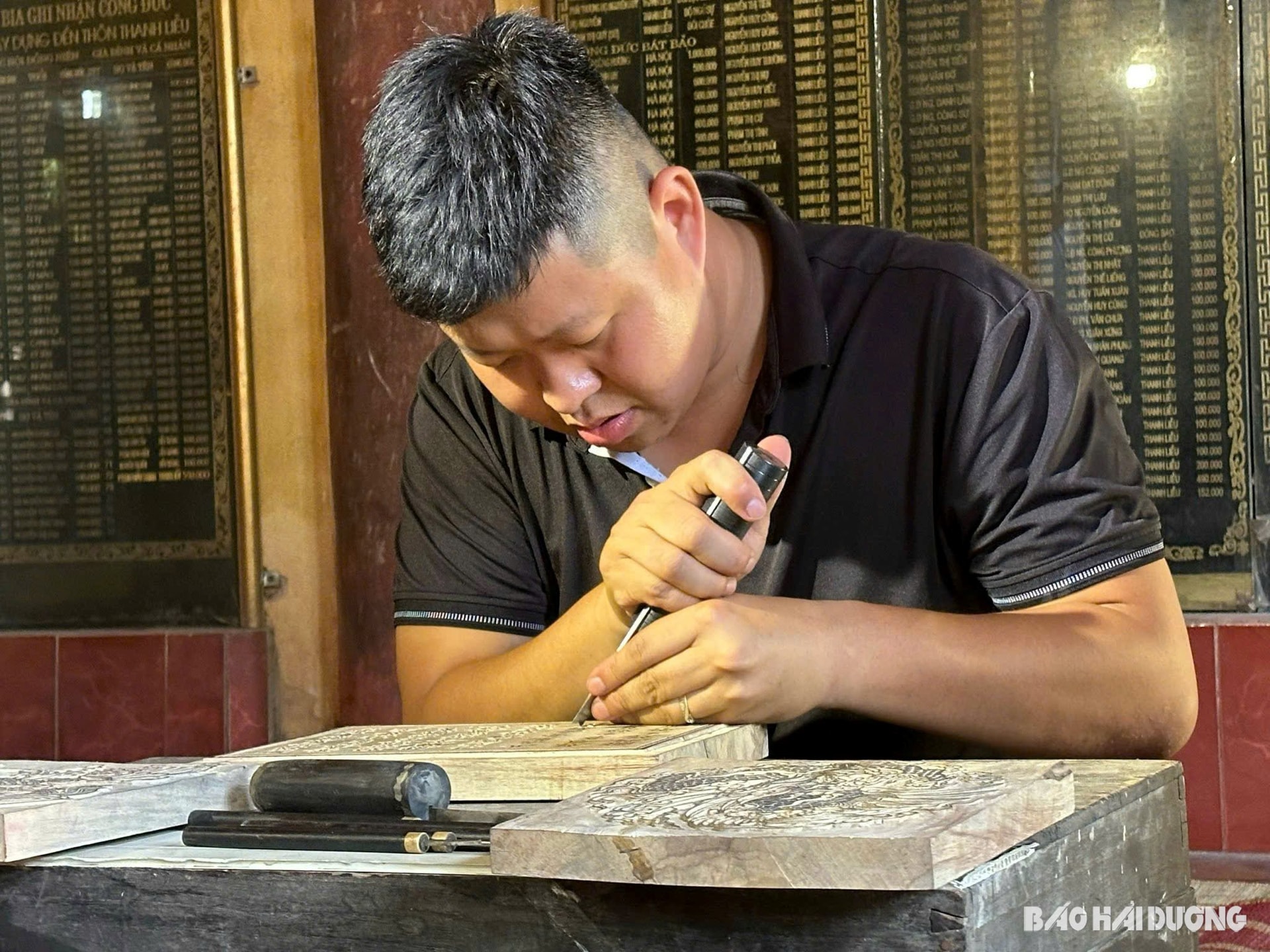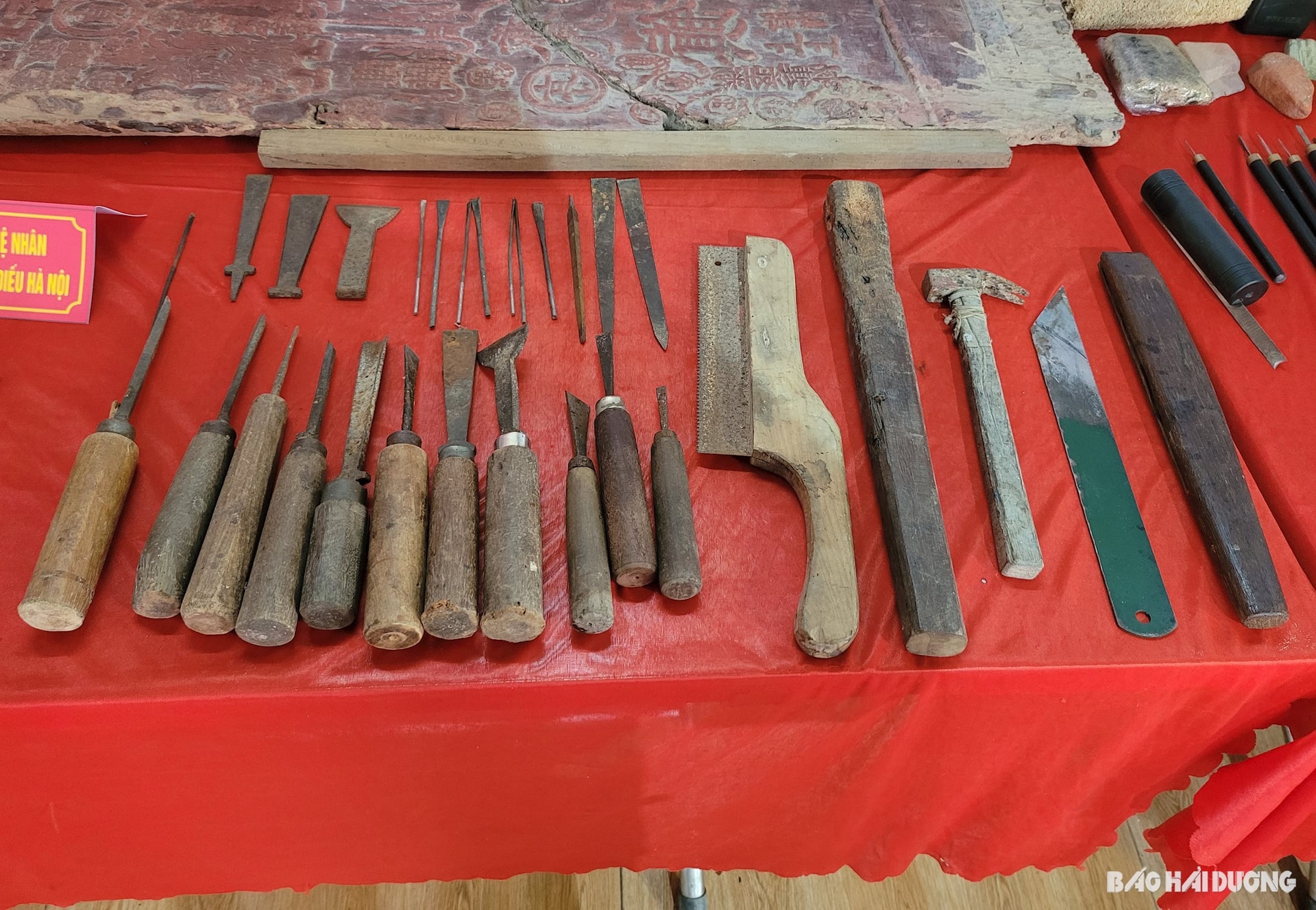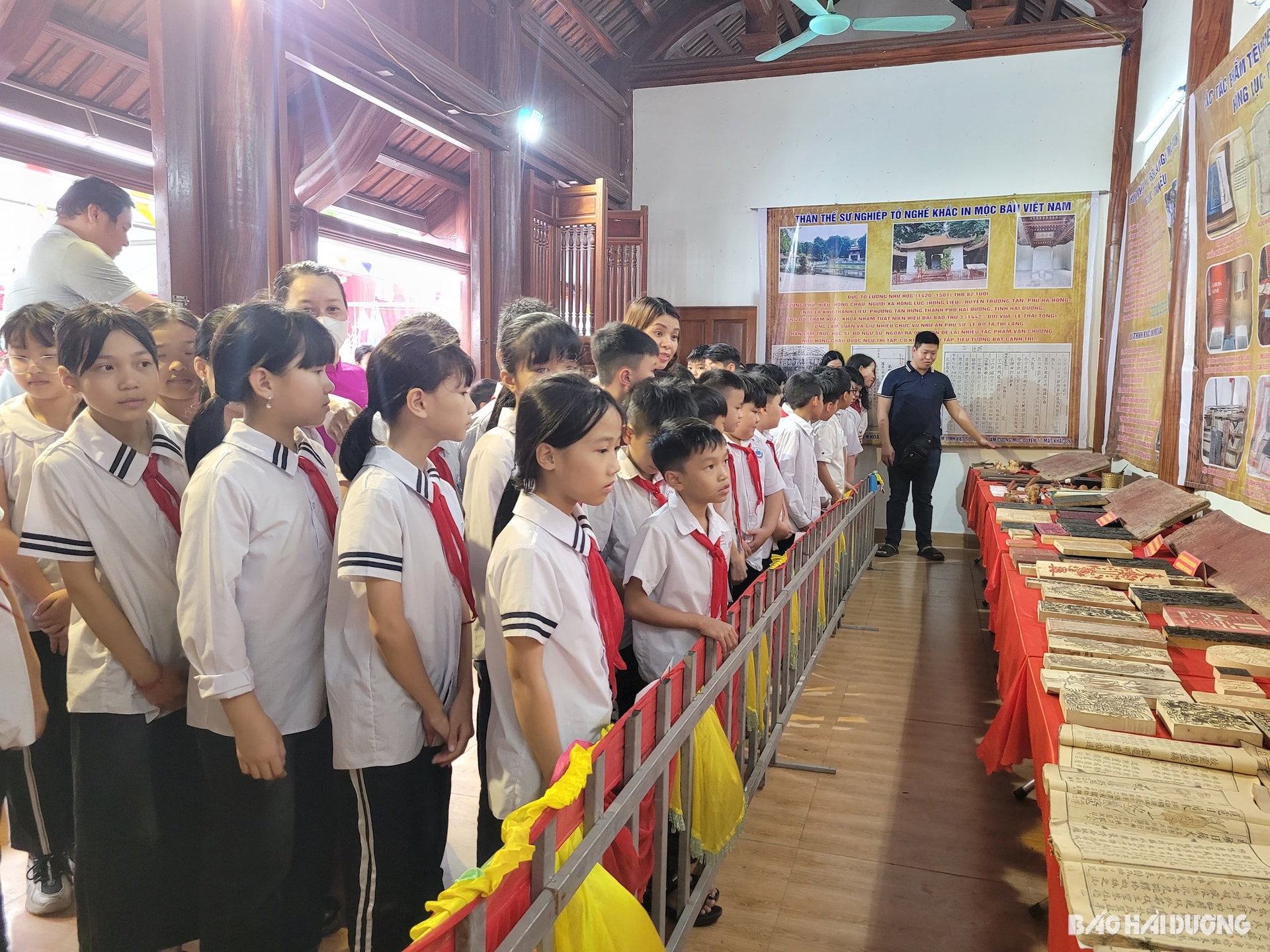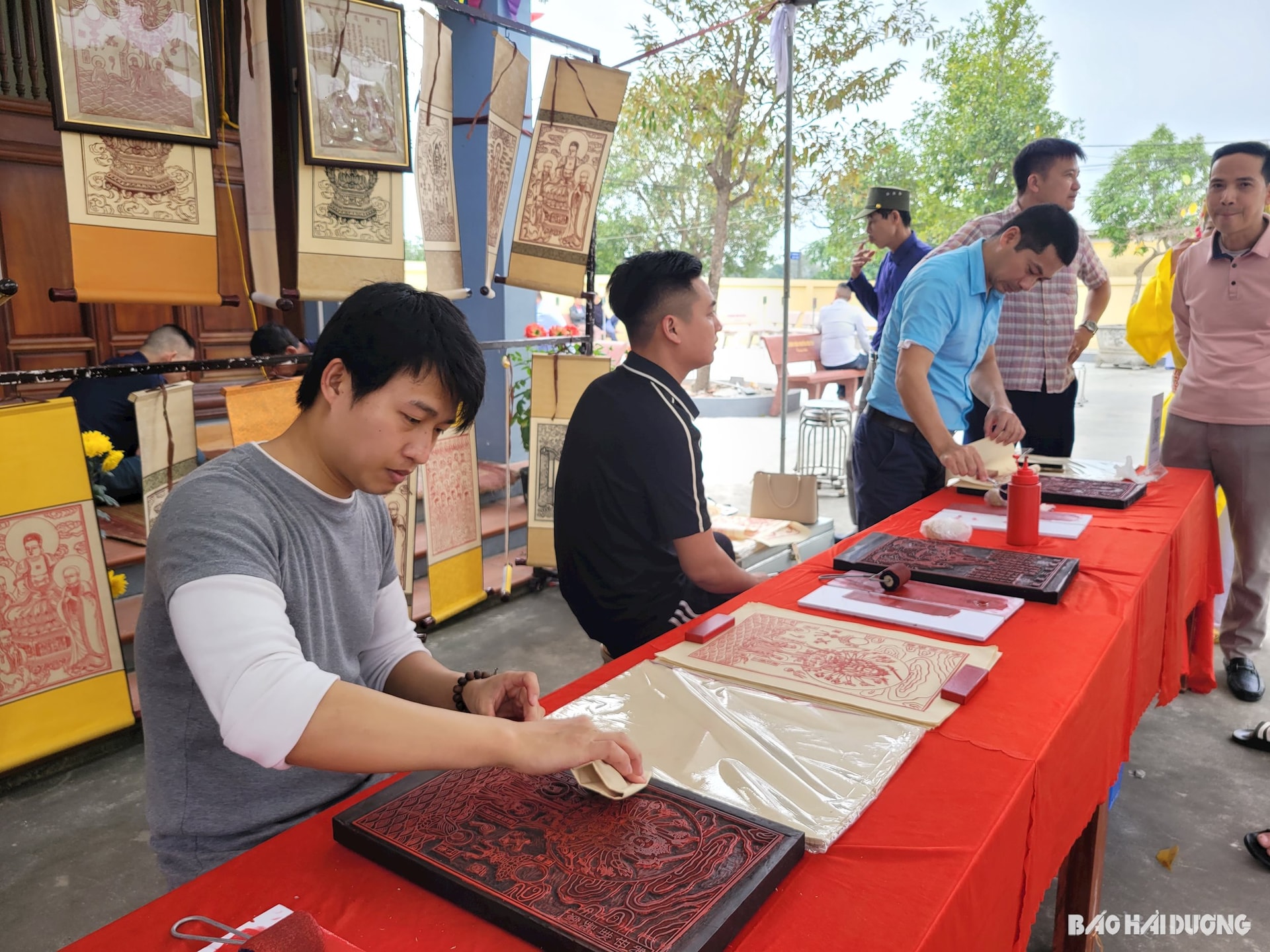The craft of woodblock carving and printing in Hai Duong province has gradually faded away over time. Cherishing the legacy of his ancestors, Nguyen Cong Dat, a 32-year-old artisan in Thanh Lieu village, Tan Hung ward, Hai Duong city is striving to revive this traditional craft.

Modern-day man preserves ancient craft
Young artisan Nguyen Cong Dat gently carries a wooden table and neatly arranges his woodblock carving tools. His toolbox contains over a dozen types of chisels and carving knives.
Small, square pieces of wood are neatly placed on the table, before he sits cross-legged as if preparing for meditation. This is when Dat's woodblock carving work begins.
“Centuries ago, my hometown was well-known for woodblock carving and printing, thanks to which everyone was well off,” said Dat.
When Western printing techniques were introduced into Vietnam, woodblock carving and printing gradually fell into oblivion. Traces of Vietnam's first 'printing center' faded.
Dat was fascinated with carving and drawing from a young age. Learning a little from his uncle and other artisans in the village, he meticulously chiseled and printed seals - the first products of any artisan in the village.
As he grew older, his love for the craft led him to studying interior design at Hanoi Open University.

After graduation, he worked in traditional decorative arts by carving relief sculptures of mythical creatures and floral patterns for pagodas and temples. But the allure of woodblock carving seemed to remain in his veins, so he decided to return to his hometown to practice woodcarving after a short time.
Recalling his connection to woodblock carving and printing, Dat said he visited the Temple of Literature in Hanoi up to four times in his first year of university. Each time he came, he tried to find any materials related to woodblock carving and printing.
Not knowing Chinese, he copied inscriptions and brought them back to his hometown to ask the village elders or boldly visited Professor Le Van Lan and historians Duong Trung Quoc and Tang Ba Hoanh for answers.
“Understanding the origin of the craft made me even more passionate about researching into it”, Dat said.
Dat's parents, seeing their son's passion, do not hinder him. He has paid out of his pocket many times to travel across the country to learn about the woodblock carving and printing art of his ancestors. He even learnt Chinese and Nom (Chinese-transcribed Vietnamese) characters to be able to read woodblocks.

The field trips helped Dat realize that most ancient woodblocks were made by artisans from Thanh Lieu village, who were knowledgeable about culture and language.
“Many books were almost entirely made by them, from compilation to writing, carving, and binding,” said Dat.
Woodblock printing is an ancient technique that requires artisans to be meticulous and skillful, according to Dat.
The wood used must be fresh, straight, and 40–60 years old. The printing paper must be do or xuyen to ensure the quality of prints.
The paper is placed on a woodblock covered with Chinese ink, pressed gently and evenly by a roller, and then left for a few minutes for the ink to dry before a complete print is obtained.
Thanh Lieu village artisans use a horizontal knife with a buffalo horn handle and a crescent moon-shaped steel blade to flexibly carve characters with clear light and bold strokes.
It takes an artisan 3-5 days to complete a woodblock. Many woodblocks require several weeks or even months to be finished, depending on the length of the text and the subject requested by customers.
Notwithstanding the challenges, Dat is working with the villagers to rekindle the flame of woodblock carving and printing, demonstrating the resilience and adaptability of the traditional craft.
“I used to think that Thanh Lieu woodblock carving and printing craft would be lost due to the rise of printing machines. Thankfully, there remain young people like Dat who are passionate about the craft and determined to revive it,” said Nguyen Cong Trang, one of old artisans in the village.
Determination to revive craft village

Nguyen Cong Dat has been working on a project called "Back to the Village" with many artisans and other youngsters to preserve and develop the woodblock carving and printing craft, create valuable economic products, and make Thanh Lieu an experiential tourism destination attractive to domestic and international tourists.
“Dat and his teammates have achieved positive results, with the nearly 600-year-old craft recognized as a traditional one by the provincial People's Committee last September,” said researcher Nguyen Dinh Hung.
“The woodblock carving and printing craft should be cherished and preserved, as it made great contributions to two world documentary heritage pieces and four national treasures in Vietnam,” Dat said.

Dat and other woodblock carving and printing lovers are taking steps to nominate Thanh Lieu woodblocks as national intangible heritage.
He is coordinating with Chu Dau Pottery JSC. to research and print woodblock images on ceramic products so as to introduce woodblock culture to friends worldwide.
Dat also hopes to turn Thanh Lieu woodblock carving and printing village into a cultural tourism destination associated with flower and plant growing experiences in his hometown.
Memories of time will remain forever on the woodblocks, and young people who love the craft and are passionate about exploring history like young artisan Nguyen Cong Dat are rare and worthy of respect.
Thanh Lieu woodblock carving and printing craft has existed for more than 580 years. Its founder was Luong Nhu Hoc, a mandarin under the Initial Le Dynasty. Hoc brought the craft home and taught it to the people after two missions to China in 1443 and 1459.
The craft then developed and reached its peak during the Nguyen Dynasty along with the reputation of Hong Lieu printing guild (old name of Thanh Lieu village).
HOAI ANH